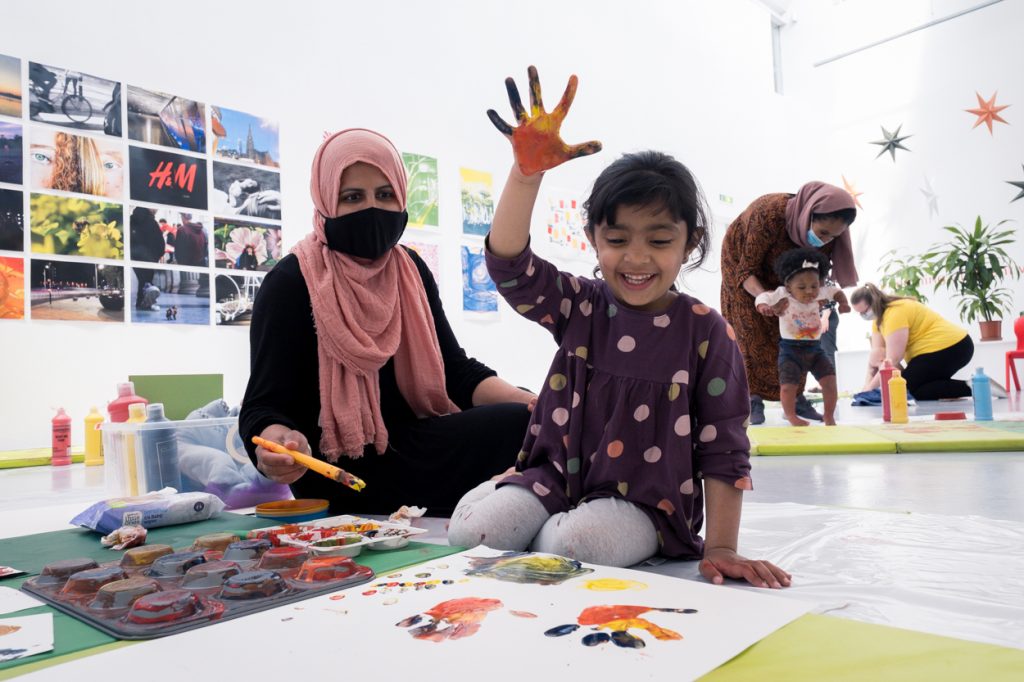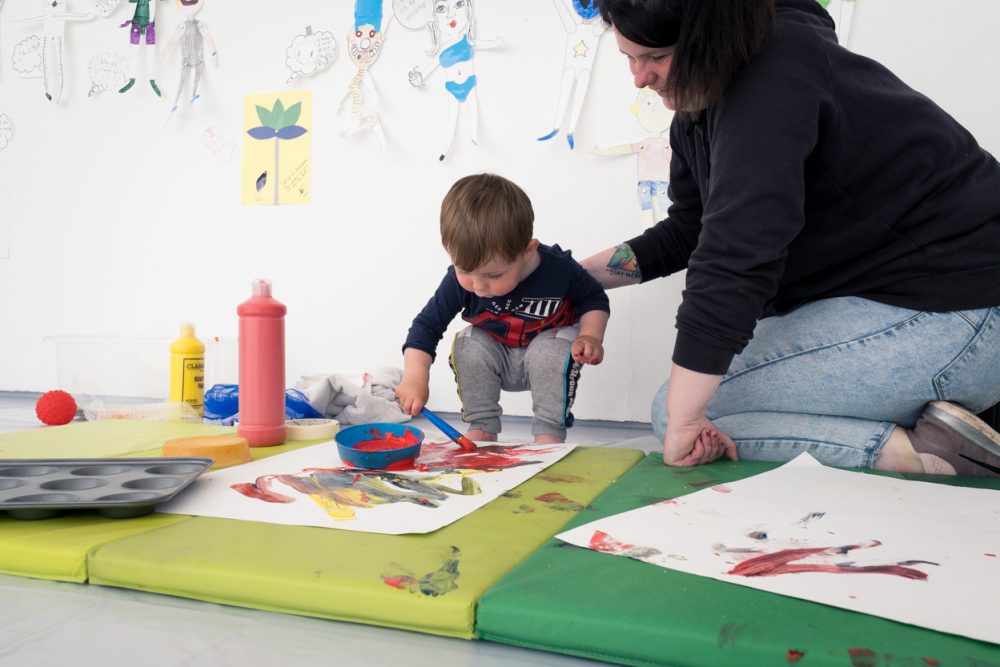Art making together can bring so much joy to very young children and their grown-ups. And while you make art together, you and your baby are also sharing something important.
Making art together builds wonderful moments of connection between babies and their grown-ups – these moments are the key building blocks of strong relationships and self-esteem. By responding positively, your baby learns that the ‘mark’ they make on the world will be positively received.
Playing with art materials also gives young children new and stimulating sensory experiences. By helping your baby enjoy these experiences, you are teaching them not to be afraid to explore the world.
It can be hard to know where to start making art with very small children so here are some suggestions on how to get going making your first paintings together. Don’t worry about how it looks and just enjoy the process of exploring the paint together.
All art materials need supervision – never leave young children alone with art materials – our activities are for doing TOGETHER
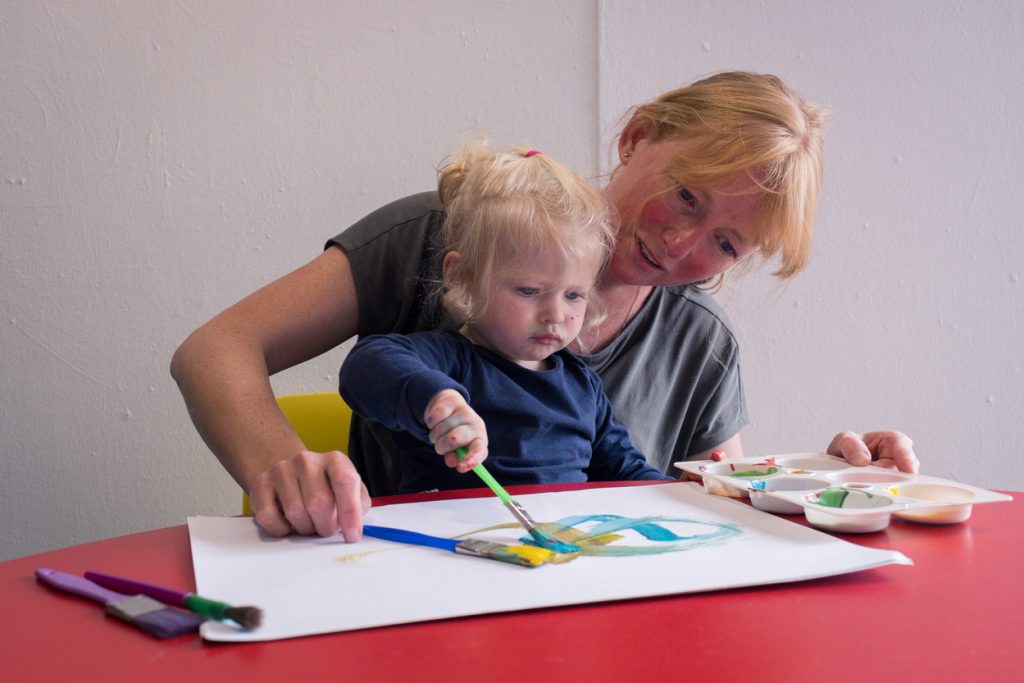
Set Up
Get everything out that you might want before you begin – baby wipes, old towel, art materials, extra paper. Cover the surface you are using with a plastic mat, oil cloth, or newspaper.
Use the floor or table, wherever you will be most comfy together. We like to work on the floor, all of us at baby level, so they can use hands and feet, but it can also work well to sit at a table with a baby on your lap, or with them in a high chair. Painting out in the garden is perfect in the summer and you won’t have to worry about mess.
Remember to put wee ones in old clothes or just a nappy (babies are much easier to wash than their clothes!). Put something old on yourself so you can still cuddle a painty baby.
Tip:
Run a bath that’s a bit too hot before you start so it will be perfect by the time you finish, and they can just go straight in.
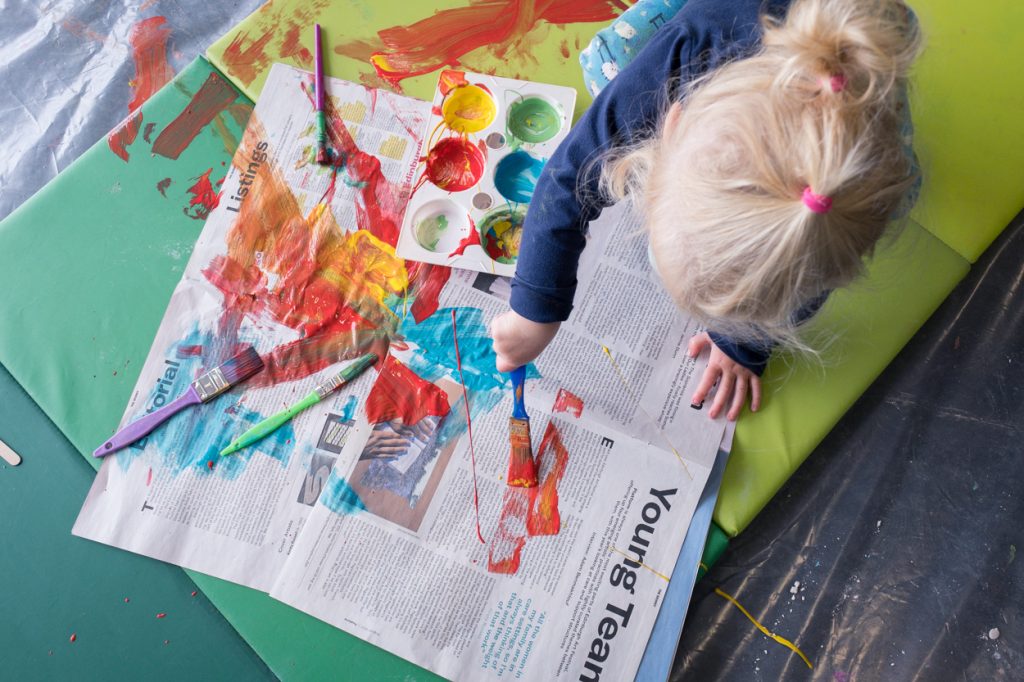
Materials
Paint is best for easy mark making and versatility. Go for thick water-based paint, usually called ‘ready mix’, ‘poster paint’ or gouache.
Hands are all you need for painting.
If you want to try brushes, make sure they are chunky to be easy to hold and won’t fall apart. We pop our brushes in bottle steriliser between sessions or you can run them through a dishwasher, as they often get sucked on.
Other fun ways to spread paint are rollers or sponges.
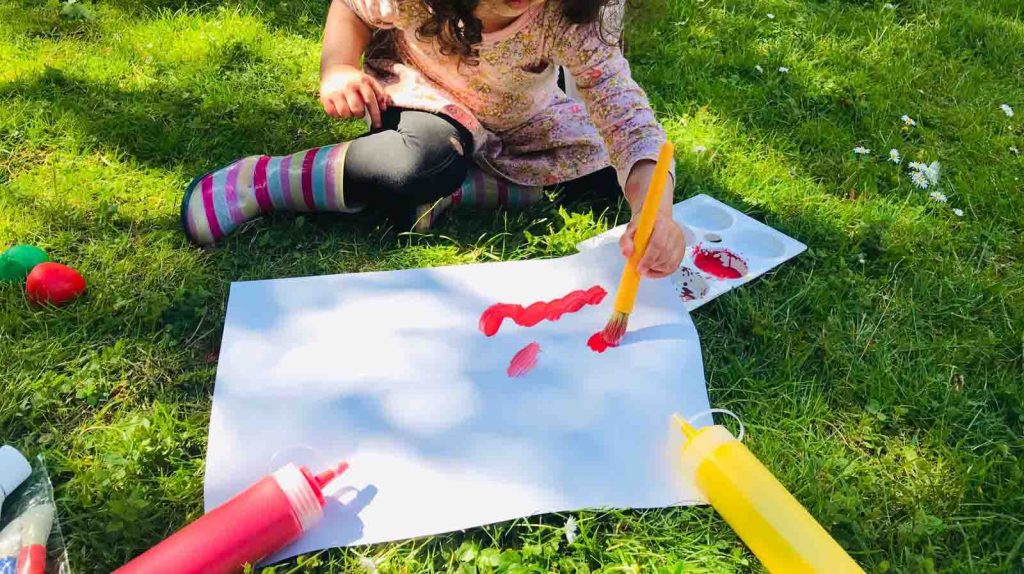
Plastic plates or cupcake tins make great paint trays
You can also try home made paints based from food stuff. You can find some ideas here.
Paper which is thick enough not to fall apart when wet, and absorbent enough to take paint easily is best – like paper called cartridge or sugar paper rather than thin photocopier paper. You can add in some recycled drawing surfaces. Try opening out cardboard boxes or using newspaper or old book pages for a fun effect.
Tip: As lots of wee ones are going to put everything in their mouth, make sure materials are baby safe by choosing non-toxic products. If you are unsure about what you are using, you can always email the company to ask. Lots of paint manufacturers say 3+ on their paint due to the small parts in the lid, but if you check with them, the paint is non-toxic and safe to go in their mouth, keep the bottle up high and put paint out in trays or on plates for them. We use companies like Baker Ross, Hope Education and Specialist Crafts and these all allow online ordering.
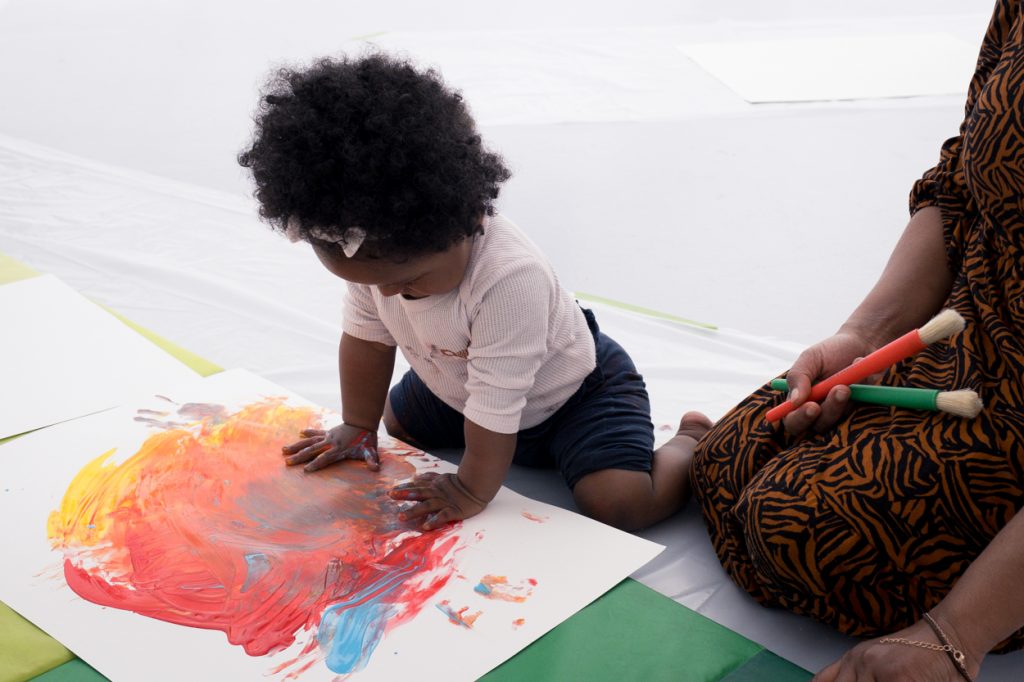
Making their first marks
Little ones will enjoy exploring the texture of the paint and seeing what they can do with it. If they have never felt paint before they might be surprised and take a little while to warm up to it so allow them to explore it in their own time.
The easiest way to get started painting depends a bit on age.
For small babies try letting them lie on their tummy and put a sheet of paper where you have already put out a few blobs of paint in front of them. This will let them reach out and feel the paint and then start to move it about on the paper. You often end up with rainbow shaped paintings as they sweep the paint with their arms.
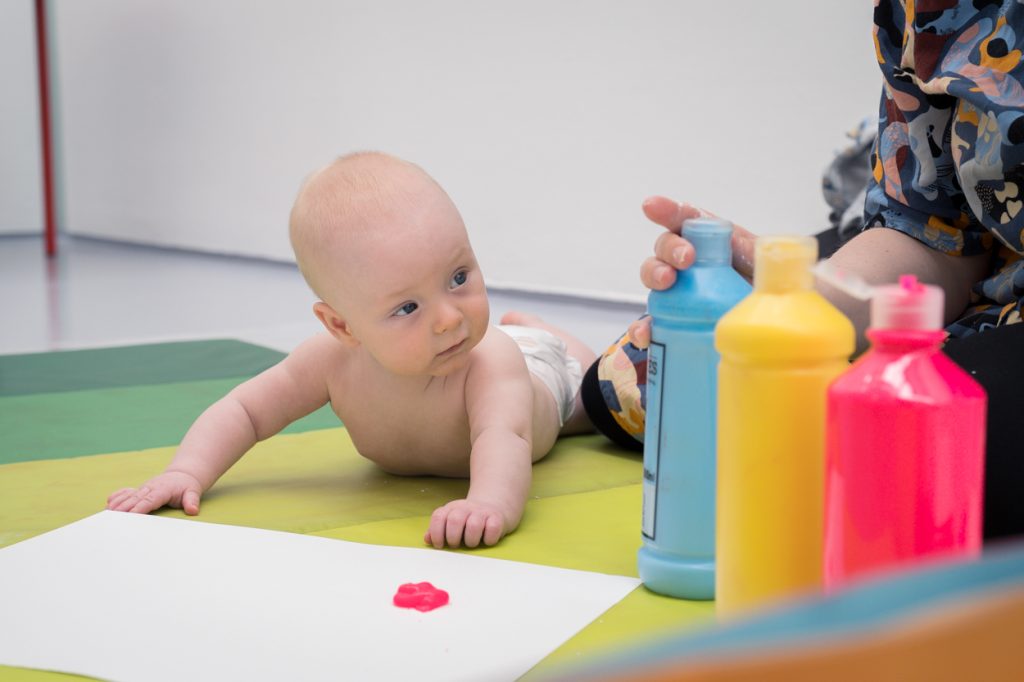
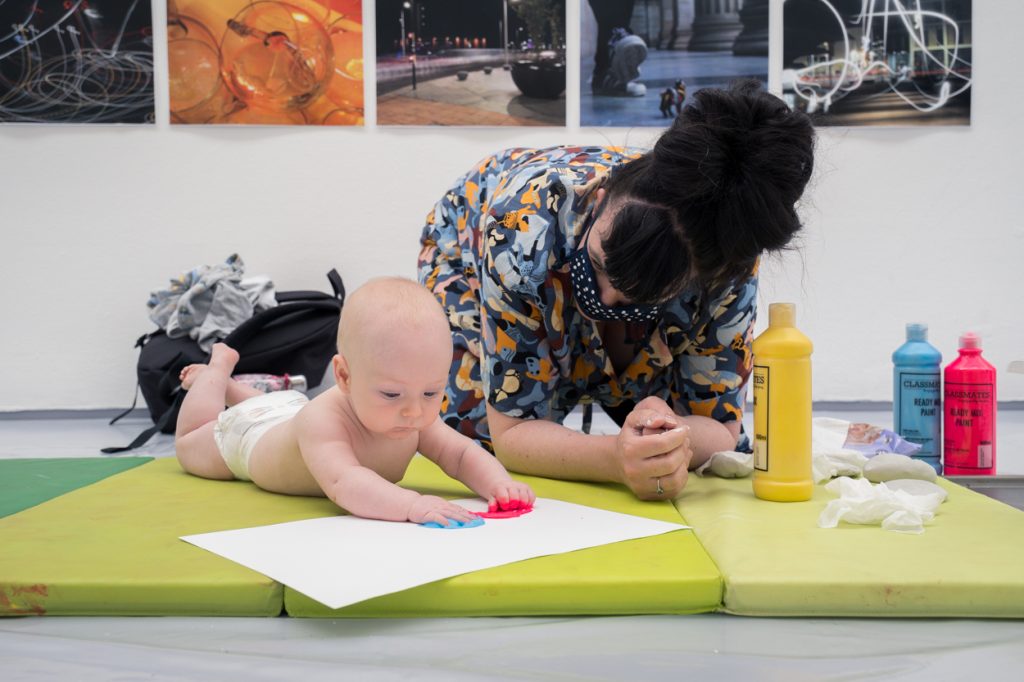
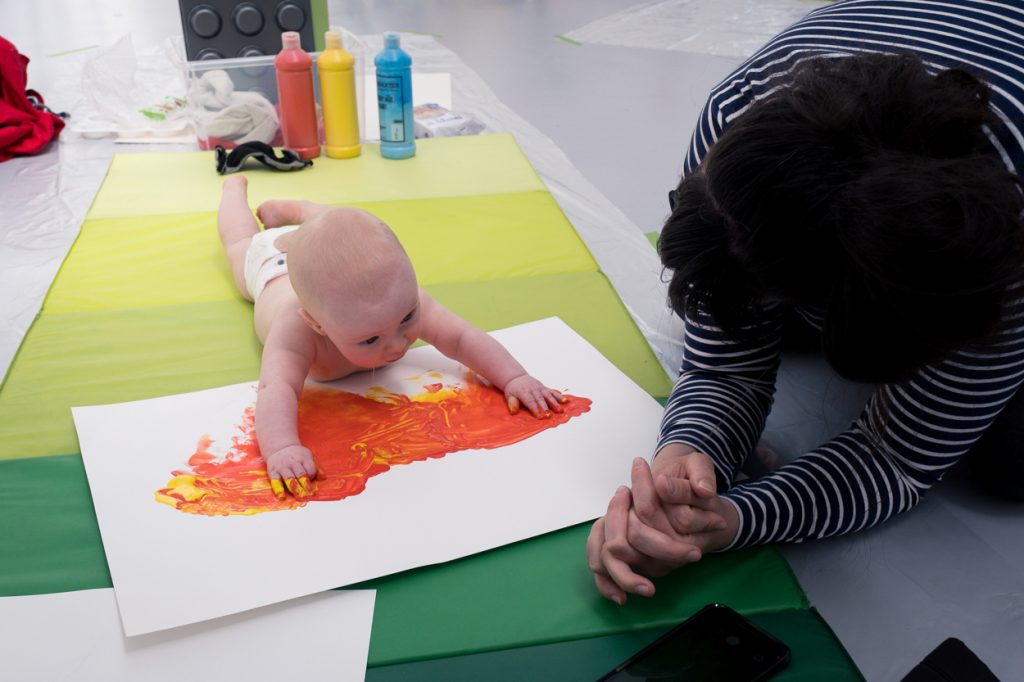
Older babies might like to paint this way too, or they might like to sit between your legs so you are propping them up to explore with hands and feet. Or they can sit on your lap at a table. You could try helping them to dangle their feet into the paint.
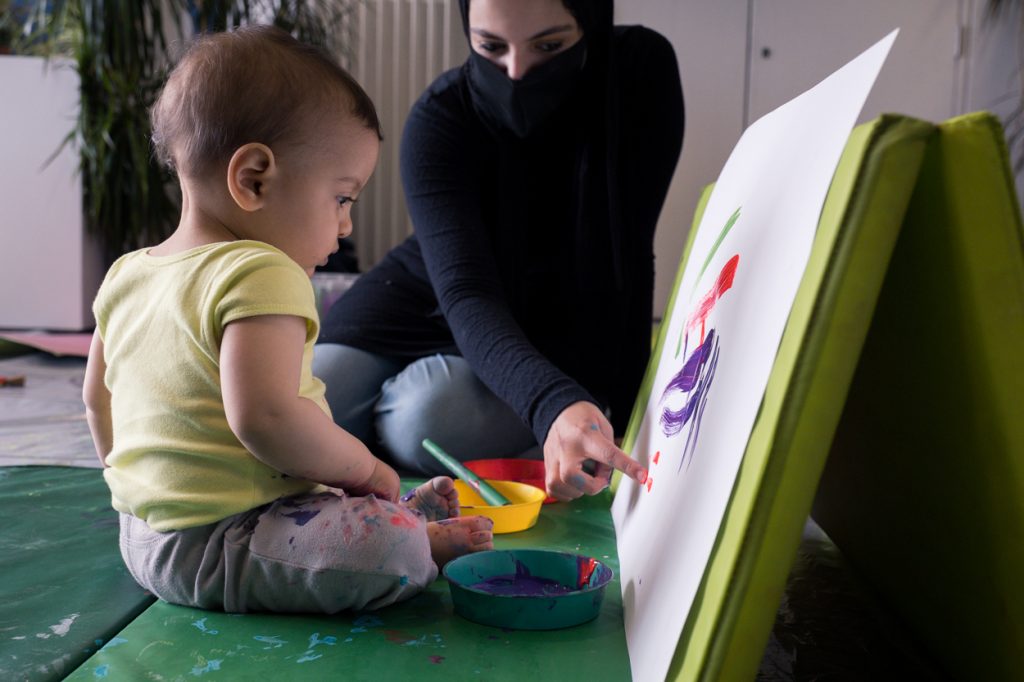
Toddlers might like to see the paint all laid out in the paint tray for them and they can be offered brushes or just their fingers to put it on the paper.
Have a shot yourself to show little ones the idea of making a mark on the paper. Let them explore and see what they come up with. And if they are not a fan today, don’t worry, just try again another time. Follow their lead for when they have had enough (tiny ones will not last long) and then move to bath time. If you can pin up their paintings, they might like to look at them and talk about what they made.
Hand and Foot Prints
There is no more direct way for wee ones to make their mark than with handprints or footprints. It’s nice doing prints like this together as the brushing on of the paint is a nice sensory experience for little ones, as well as seeing the impact of the mark they can make when they stamp it down.
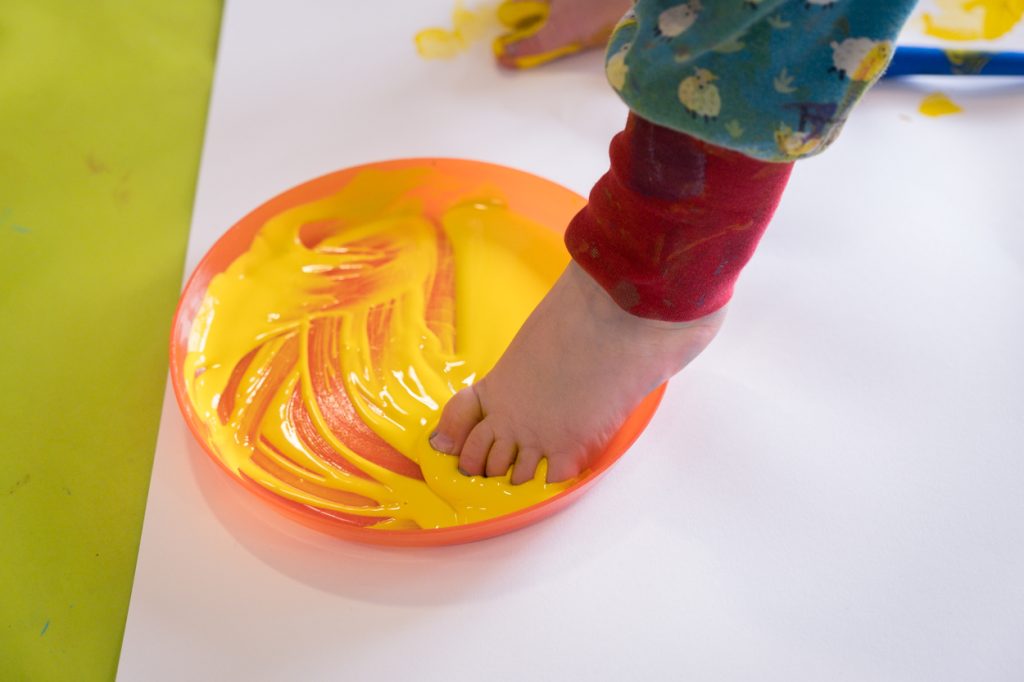
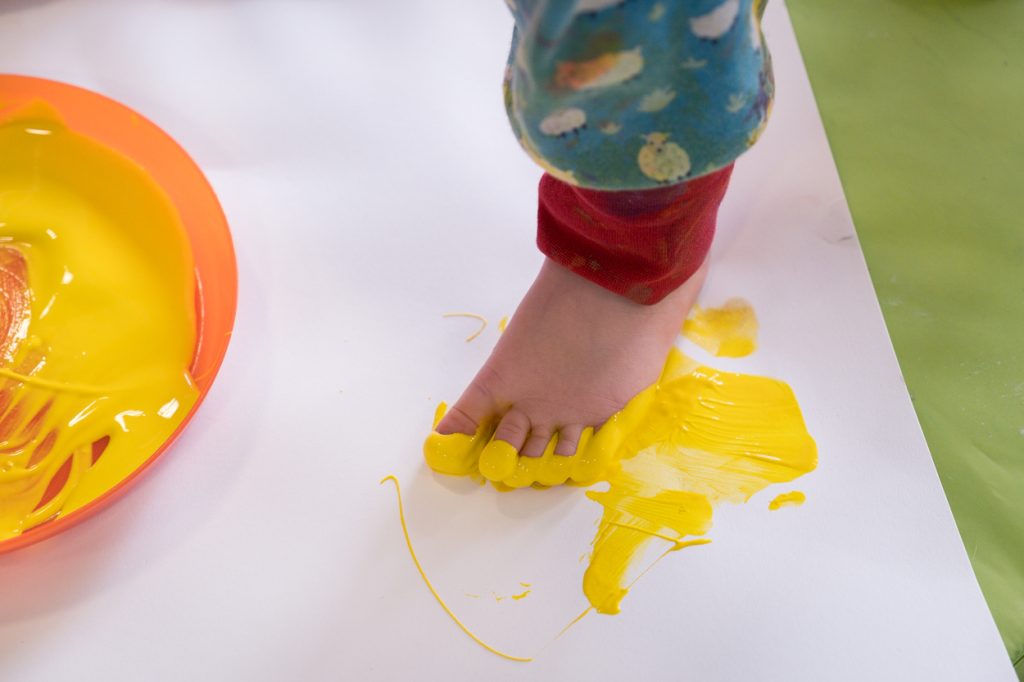
If you spread some paint over the large tray or a plate, that will let little ones put their hands or feet right in. Or you can paint onto their hands or feet with a brush then let them print it onto the paper.
